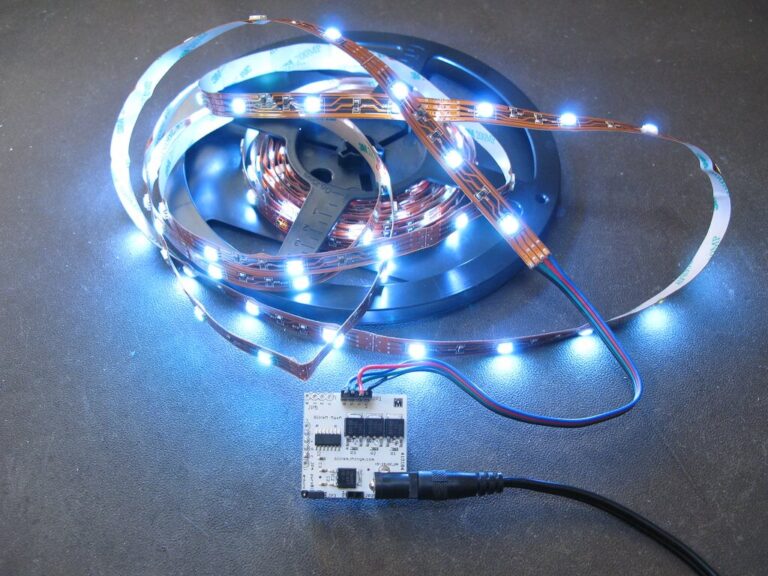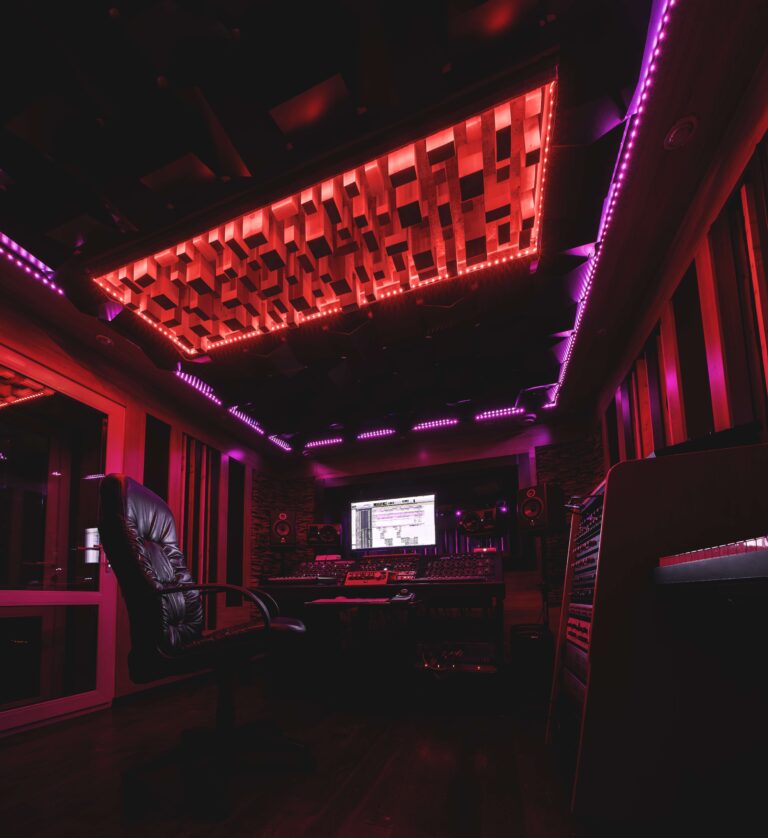How to Reset Your LED Strip Lights in 7 Easy Steps
How to Reset LED Strip Lights
LED strip lights are a great way to add some extra light to your space, but sometimes they can malfunction or stop working as expected. Luckily, resetting them can often fix these issues. Here’s a simple guide on how to reset your LED strip lights.
Method 1: Power Supply Method
Turn Off the Power
First, make sure the LED lights are disconnected from the power source. Unplug the wires or turn off the connected switch. This keeps you safe and prevents any accidental electrical shock.
Wait for a Few Seconds
Check the connections between the light strips and the power source to ensure they are secure. A few seconds of waiting can prevent poor connections that might cause issues.
Reconnect the Power
Use a remote controller if available, or flip the button on and off for a few seconds to reset the lights. This method is straightforward and often effective in resolving minor issues.
Test the Lights
Before putting the lights back, test them to ensure they are working correctly. This step is crucial to confirm that your reset was successful and your lights are functioning properly.
Method 2: Remote Power Button Method
Plug in the LED Strip Light
Ensure the light is connected to a power source. If it's not plugged in, the resetting option won't work, so make sure you have a stable power supply.
Find the Reset Button
Locate the reset button, usually on the back or side of the unit. It might be labeled as “Reset” or have a picture of a reset sign. Knowing where this button is will save you time and effort.
Turn off the LED Strip
Disconnect the power or turn off the LED strip. This step is necessary to ensure that you can safely access and press the reset button.
Take Out the Power Adapter
Remove the power adapter from the strip lights. Be careful not to touch any metal elements with your fingers to avoid electrical shock.
Press and Hold the Reset Button
Hold the reset button for 3 to 5 seconds. If the button has a small shape, you might need to press it with a pencil or other object to ensure it's fully pressed.
Plug in the Power Adapter Again
Reconnect the power adapter back to the strip lights. Check that it plugs correctly by ensuring the lights on the LED strip turn on.
Turn on the LED Strip Lights
Switch on the strip lights by flipping the button or attaching it back to the power source. The LED strip light should now be reset and working correctly.
When Should You Reset LED Strip Lights?
Connectivity Issues
If the strip is not correctly joined with its power source, it may need a reset. This issue often arises when there are loose connections or improper wiring. Ensure all connections are secure and check for any signs of damage or wear on the wires.
Light Flickering
Flickering lights indicate a need for a reset. This problem can be caused by a variety of factors including loose connections, low voltage, or even software glitches. If your LED strip lights are flickering, try resetting them to see if it resolves the issue.
Change In Power Supply
After a power shutdown or fluctuations, your LED strip lights might require a reset. This ensures that the system is properly reconfigured and ready to function with the new power supply.
Changing Remote or Its Battery
When changing the remote or its batteries, it's a good idea to reset the LED strip lights. This ensures that the new remote or batteries are recognized by the system and that all settings are updated correctly.
Problems with the Controller
For outdated or defective controllers, resetting the LED strip lights can help troubleshoot and resolve issues. Sometimes, simply restarting the controller can resolve connectivity problems.
Changes In Settings
To adjust settings like intensity or color, you may need to reset your LED strip lights. This ensures that any new settings are applied correctly and that the system is functioning as intended.
Part Of Maintenance
Regular resets are part of maintaining optimal performance for your LED strip lights. This helps keep them running smoothly and prevents potential issues from arising.
What To Do When Restarting Isn’t Helping? – Troubleshooting
Try Replacing the Batteries
If restarting isn't helping, try replacing old batteries with new ones. Sometimes, burnt-out bulbs can also cause issues, so make sure to check those as well.
Ensure No Loose Wire
Eliminate any loose wires and ensure proper connections. A loose wire can cause intermittent connectivity issues that may not be resolved by simply restarting.
Try a Different Power Source
Use a different power source, such as a 9-volt battery instead of AA batteries, to rule out any issues with the current power supply.
Clean the Contact Locations
Remove dirt and debris from the contact areas. Dirt can cause poor connections which might not be resolved by just restarting.
Reset the Controller
Press and hold the start button for 3 seconds, then release and wait 15 seconds before starting again. This can sometimes resolve issues with outdated or defective controllers.
Additional Tips for Long-Lasting Performance
Proper Installation
Ensure the lights are installed correctly and securely. Improper installation can lead to a variety of issues including poor performance and safety hazards.
Heat Dissipation
Do not cover the lights, and consider installing them on metal for heat absorption. Proper heat dissipation is crucial for the longevity of LED strip lights.
Correct Power Source
Use a power source with enough wattage and proper voltage capacity. Using an inadequate power source can lead to dimming or flickering lights.
Suitable for Conditions
Ensure the lights are suitable for outdoor or high humidity conditions if necessary. Some LED strip lights are designed specifically for these environments, so make sure you choose the right type.
FAQs
Why Are My Strip Lights Not Working?
Check if the lights are plugged in, the circuit breaker, and the remote or controller. Sometimes, it's as simple as ensuring everything is properly connected.
Where is the Reset Button on Led Light Strips?
The reset button is usually found on the back side of the strip, labeled as “Reset” or with a reset symbol.
Do LED Strip Lights Have Fuses?
Yes, they often come with fuses to protect the circuit from overloads. If your LED strip lights have a fuse, check it first before attempting any other troubleshooting steps.
Can LED Light Strips be Reprogrammed?
Yes, they can be reprogrammed using controllers or smartphone apps. This feature allows you to customize settings and adjust colors as needed.
Why Don’t the Colors of my LED Lights Change?
Check the batteries, remote, and connections. If necessary, reset the remote or controller to ensure that all settings are updated correctly.
Conclusion
Resetting your LED strip lights can be a straightforward process if you know when and how to do it. By addressing connectivity issues, flickering lights, and other problems promptly, you can ensure your LED strip lights continue to perform optimally. Regular maintenance and proper installation also play crucial roles in extending their lifespan. Whether you're dealing with a faulty controller or simply need to adjust settings, following these tips will help you troubleshoot and resolve any issues effectively.
How do I reset my LED strip?
To reset your LED strip, follow these steps:
- Turn off the power supply: Unplug the LED strip from the power source.
- Locate the reset button: Find the reset button on the main control box or on the light strip itself.
- Press and hold the reset button: Press and hold the reset button for 5 seconds (or as specified by the manufacturer).
- Reconnect the power: Plug the LED strip back into the power source.
- Turn on the LED strip: The lights should now be reset and working correctly.
Can LED lights be reset?
Yes, LED lights can be reset. The process typically involves turning off the power supply, locating and pressing the reset button, and then reconnecting the power source. This method ensures the lights return to their original settings.
How do you fix LED strip lights not working?
If your LED strip lights are not working, try the following:
- Check the power supply: Ensure the power adapter is properly connected.
- Locate loose connections: Verify that all connections between the light strip and the power source are secure.
- Reset the LED strip: Follow the steps mentioned above to reset the LED strip.
- Clean the contacts: If the issue persists, clean the contact points on the LED strip.
How do you reset sync light strips?
To reset sync light strips:
- Turn off the power supply: Unplug the sync light strip from the power source.
- Locate the reset button: Find the reset button on the main control box or on the light strip itself.
- Press and hold the reset button: Press and hold the reset button for 5 seconds (or as specified by the manufacturer).
- Reconnect the power: Plug the sync light strip back into the power source.
- Turn on the sync light strip: The lights should now be reset and working correctly.


